| Mapping | |
Continuous high precision navigation
Using MEMS inertial sensors aided RTK GPS for mobile mapping applications |
|
 |
|
|||||
 |
|
|||||
 |
|
|||||
 |
|
|||||
 |
|
|||||
In a modern mobile mapping system, the navigation component usually consists of a GPS receiver and an inertial navigation system (INS), which can provide accurate geo-referencing to the imaging sensors [1][2]. To achieve centimetre-level positioning accuracy, RTK-GPS is a natural choice. However, RTK-GPS in urban areas suffers from frequent outages due to blockages of either the GPS signals or the reference station radio links. In addition, multipath from buildings, trees and heavy vehicles could degrade the accuracy of the GPS when the vehicle is near them. Integration of an INS and GPS can bridge the GPS outages and maintain accuracy over short time periods, but a high–precision INS is too expensive for many land vehicle applications.
Keeping in mind that many mobile mapping practioners already have the RTK GPS devices, the ideal system configuration would be that such users simply plug their RTK-GPS receivers into an integration device, which has built-in MEMS inertial sensors and can integrate the two data streams when they are available. The integration device should be something like a “universal” box that has sufficient flexibility to be compatible with many different RTK-GPS receivers.
This paper describes the “NavExplorer”, a low-cost GPS/INS integrated system which uses inexpensive MEMS inertial sensors and RTK-GPS to balance affordability and accuracy, providing a continuous, high accuracy navigation solution. To achieve maximum flexibility, field programmable gate array (FPGA) technology is used to implement the integration device. The FPGA approach allows us to easily configure the logic and software of the system without any changes to the hardware components of the integration device when it is connected to a different GPS receiver.
By integrating the NavExplorer with the PGR Ladybug panoramic camera and Multiple SICK laser scanners, a mobile mapping system has been developed for the Taipei 3D Urban Reconstruction. NavExplorer generates position data for precise 3D object geo-referencing. The NavExplorer consists of a MicroStrain inertial sensor, unit and a Trimble RTK-GPS receiver. The Trimble receiver outputs the position solution in either RTK- or standalone GPS when the RTK corrections are unavailable. With the Trimble operating in the RTK-GPS mode, the integration solution achieves centimetre-level accuracy. This accuracy can be maintained for a short period of time when the RTK corrections are blocked. With the integration Kalman filter, the NavExplorer can provide accuracy to a reasonable level when the host vehicle is driven in a tunnel or operated in an environment of frequent GPS outages. The performance of a GPS/INS integrated system during GPS outages is an excellent indicator of the successful design of the system [3].
Many road tests have been conducted in Sydney and Taipei to evaluate the performance of the NavExplorer. The results indicate that the NavExplorer can maintain good GPS accuracy in multipath environments, and provided smooth and continuous solutions in tunnels when the GPS signals have been completely lost.
2. Configuration of the system
2.1 Hardware components
The hardware components of the NavExplorer consist of a Trimble BD950 GPS receiver, a MicroStrain 3DM-GX2 MEMS inertial sensor unit, and an FPGA-based time-sync data logger, as shown in Fig 1. The time-sync data logger collects the GPS and INS data and stores them on a SD card. In addition to accepting a PPS input for precise time synchronisation, the NavExplorer also provides PPS output for time synchronisation of other components of the mobile mapping system.
Fig. 1 The hardware components of NavExplorer
The hardware connections are detailed in Fig. 2. The PPS output of the BD950 is at 7.2v/50ohm, which is converted to a TTL level, which is fed into the time-sync data logger for time synchronisation of its internal clock with GPS time. The PPS signal is also split for output for other devices. It is fed into the 3DM-GX2 in the current configuration to trigger its sampling. The 3DM-GX2 and BD950 are connected to the time-sync data logger via the ports COM1 and COM2. The radio modem is connected with the BD950 via the port COM3.
Fig. 2 Illustration of hardware connections
2.2. Operation of NavExplorer
The BD950 and 3DM-GX2 are configured to output the data at 10Hz and 20Hz respectively. The operation status of the NavExplorer will be displayed on the LCD screen of the data logger. Three flags indicate all the data of INS, GPS, and PPS are being received by the data logger. The button on the data logger controls start/stop of logging data on the SD card. The logging status is displayed on the LCD screen.
The Files: Three files are written to the SD card for each logging session. These files are named as “GPS_x.BIN”, “INS_x.BIN” and “PPS_x.BIN”, where “x” corresponds to an index number of the logging sessions from 0 to 9. The data are recorded in the binary format.
The Button: The button controls SD card mounting and data logging. When the device is powered on data inputs from the two serial ports and the PPS will be displayed on the LCD. When the button is pressed the SD card will be mounted and new files will be created if the SD card is mounted successfully. The data is then logged to the SD card. When the button is pressed again, the current logging session will be terminated, and the card is unmounted and can be removed from the device.
The LCD screen: The LCD displays operation status of the device, and the data input from the GPS, INS and PPS. The indicators of data input flip once when new data arrives. The total bytes of the incoming data is displayed and updated from time to time.
2.3. The software package
NavExplorer’s software package “LCIKF” (loosely-coupled integration Kalman filter) can post-process the recorded data to achieve the highest possible accuracy from an integration of GPS/GNSS and INS. With its loosely-coupled integration design, the NavExplorer can support a wide range of GPS/GNSS receivers and inertial sensors. A screen shot of LCIKF is shown in Fig. 3.
Fig.3 Screen shot of LCIKF
LCIKF provides a graphical user interface for data file selection and the integration Kalman filter tuning, as in Fig. 4, where the initial position is set from the average of static GPS position during the pre-set period of time, and the tilt angles are obtained from the static accelerometer readings, and the initial heading is obtained from the magnetometer readings. The lever-arm vector refers to the vector from the INS mass center to the GPS antenna’s phase center. The user interface allows the user to input the lever-arm with respect to the Body frame (B-frame).
Fig.4 Parameter setting dialog box
3. Design of the system
3.1 Tsync accuracy
The techniques for multisensor time synchronisation can be categorised into two types – the analogue domain and the digital domain. For analogue domain time synchronisation, the analogue signals from the inertial sensors are sampled under the control of its internal clock, which may be aligned with a standard time through the input pulse-per-second (PPS) signal output by a GPS receiver. Time synchronisation is implemented at the stage when the signal is converted from analogue to the digital form. The signal transmission lag can be reduced to a minimum with the analogue domain implementation. However, many applications require an off-the-shelf INS product which has implemented the A/D conversion internally based on its own free-running system clock and, in most cases, it operates in the absence of an external PPS signal. Such an INS packages the digital messages and sends them out through an interface to the outside world. Compared to the analogue domain implementation the main advantage of the digital domain implementation is its flexibility to support a wider range of INS and GPS devices using the same integrating platform.
NavExplorer uses an FPGA to implement time synchronisation in the digital domain. Assuming the PPS transmission delay is small enough that it can be neglected, the sampling tags time-marked by the 3DM-GX2’s internal clock represents the fraction of the time when the data is sampled. Because the moment of PPS time issued at the GPS receiver is known, the accurate INS sampling time in the GPS time-frame can be derived by a combination of the PPS time and the INS time [4]. The result can be expected to have a high accuracy because the PPS time is accurate to the one tenth of nanosecond level, and the INS internal clock is also stable during two PPS pulses.
The INS data has a transmission delay when it arrives at the FPGA data logger. This delay can be estimated using the method described above. A typical delay of the 3DM-GX2 is shown in the Fig. 5, from which an average delay of 2.97ms can be computed.
Fig. 5 Transmission delay of the 3DM-GX2
3.2 Gyro biases
For MEMS gyros, removing the average of the static gyro outputs can improve the accuracy of the attitude solution. Results from testing show that the LCIKF can capture the gyro biases adequately, as indicated in Fig. 6. The raw gyro output is shown as blue lines and the LCIKF’s estimate of the gyro biases is shown as red lines. From Fig. 6 it can be seen that the LCIKF can track the average of the gyro outputs for all 3 axes.
Fig. 6 Gyro outputs and estimate of gyro biases
3.3 Lever-arms
The hardware components of a mobile mapping system will typically be mounted at different physical locations on the host vehicle. The offset between the phase centre of the GPS antenna needs to be compensated for so that the integrated position is INS mass-centred. The LCIKF allows the input of the lever-arm between the INS and GPS, which is then applied to the integration Kalman filter:
3.4 Quality control
Although the velocity flag indicates the velocity of the BD950 is calculated from the Doppler measurements, it has been found that the velocity could contain large jumps during the integer ambiguity procedure when the RTK-GPS radio link is connected. Therefore the LCIKF must have a mechanism to check the quality of velocity measurement. One method is to start feeding the GPS solution into the integration Kalman filter after the integer ambiguities are fixed. However this arrangement is not practical, especially when the system is operating in an area where no RTK-GPS signals are available. An additional Kalman filter is then applied in the LCIKF to monitor the quality of the GPS solution.
In addition to the abnormal jumps in velocity, the position accuracy levels are used to set up the R matrices of the Kalman filters. The noise level of the GPS position and velocity can be manually input or automatically calculated in the LCIKF.
. Institute for Information Industry mobile mapping system
By integrating the NavExplorer with the PGR Ladybug panoramic camera and Multiple SICK laser scanners, a mobile mapping system has been developed at the Institute for Information Industry for the Taipei 3D Urban Reconstruction. NavExplorer generates position data for precise 3D object geo-referencing even when the host vehicle is driven in a tunnel or operates in an environment of frequent GPS outages. Fig. 7 shows the I3 mobile mapping system mounted on a car, where the NavExplorer (the small white box) is installed behind the GPS antenna. Both are connected with yellow cables.
Fig. 7 Mobile mapping system developed at the Institute for Information Industry
5. Road tests
5.1 Tests in Sydney
The RTK-GPS correction signals will cover most of suburban Sydney after the state-wide CORS network is fully operational. However, there could be no RTK-GPS corrections available unless a local reference station is temporarily setup in the test area. Therefore, the system operated in non-RTK mode for road tests in Sydney. The tests aimed to study the performance of the NavExplorer when there was serious multipath, or during GPS outages, or combination of both.
Fig. 8 shows the GPS/INS integrated solution even when the GPS ‘jumps’ off the road because of the effect of multipath in a test that was conducted in the suburb of Rockdale on 26 November 2009. The smooth red line is the GPS/INS integrated solution, and the yellow line is the GPS-only solution distorted by the multipath.
Fig.8 Effect of GPS multipath, GPS/INS(red) vs GPS-only (yellow)
Fig. 9 shows that the GPS/INS integrated solution can bridge the 35s GPS outage through the Sydney airport tunnel in a test on 26 November 2009. It can be seen that the GPS/INS integrated solution (red line) has output in the tunnel whereas the GPS solution (yellow line) is lost. The integrated solution seamlessly matches the GPS solution when the GPS solution becomes available again once outside of the tunnel. Before entering the tunnel, the vehicle was driven under a bridge caused a GPS outage of 6s. It can be seen that this GPS outage has also been smoothly bridged by the integrated solution.
Fig. 9 Bridging the GPS outage through the Sydney airport tunnel, GPS/INS (red) vs GPS-only (yellow)
Fig. 10 shows the GPS/INS integrated solution in a test conducted on 25 November 2009 on the UNSW campus, where the GPS suffers from both frequent outages and the effects of multipath caused by trees and buildings. It can be seen that the GPS/INS integrated solution (red line) is quite smooth during the whole test. It can not only smooth out the multipath from the GPS-only solution (yellow line) but also smoothly bridges the GPS outages.
Fig. 10 Test on UNSW campus of combination of multipath and GPS outages, GPS/INS (red) vs GPS-only (yellow).
5.2 Tests in Taipei
The test was conducted in Taipei on 1 June 2010. In the test the vehicle with the mobile mapping system was driven through a tunnel of length 600m. The NavExplorer’s position is plotted in red on Google Earth in Fig. 11. The GPS-only solution is in yellow.
Fig. 11 shows the track of a test with four GPS outages with lengths 5s, 9s, 36s, and 55s. It can be seen that the integrated solution seamlessly bridges all of these GPS outages.
Fig. 11 Test in Taipei with GPS outages,
GPS/INS (red) vs GPS-only (yellow)
6. Concluding remarks
An inexpensive integrated positioning device has been built for the I3 mobile mapping system. Tests conducted in both Sydney and Taipei demonstrate that the integration of RTK-GPS and MEMS inertial sensors can provide continuous position data in difficult environments with sufficient accuracy.
Further tests will compare the NavExplorer solution with a solution of a higher accuracy.
References
[1] Grejner-Brzezinska, D.A. Mobile Mapping Technology: Ten years later, Part II. Surveying and Land Information Systems, 61(3), 2001, pp. 83-100.
[2] N. El-Sheimy N. An Overview of Mobile Mapping Systems, from Pharaohs to Geoinformatics, FIG Working Week 2005 and GSDI-8, Cairo, Egypt April 16-21, 2005.
[3] El-Sheimy, N. and Niu, X. The Promise of MEMS to Navigation Community. Inside GNSS, March/April Issue, 2007, pp. 46-56.
[4] Li, Y., Mumford, P., and Rizos. C. Seamless Navigation through GPS Outages – A Low-cost GPS/INS Solution. Inside GNSS, July/August, 2008, pp.39-45.
My Coordinates |
EDITORIAL |
|
News |
INDUSTRY | LBS | GPS | GIS | REMOTE SENSING | GALILEO UPDATE |
|
Mark your calendar |
MARCH 2011 TO NOVEMBER 2011 |
Pages: 1 2


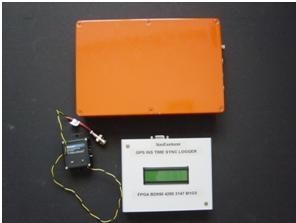
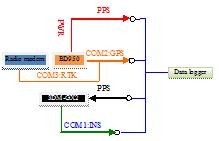
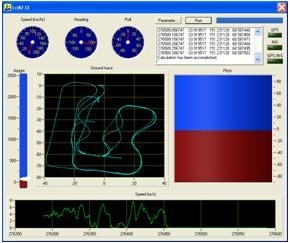
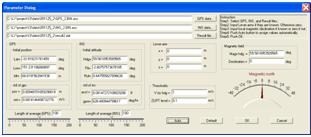

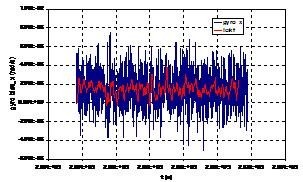
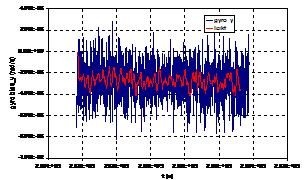
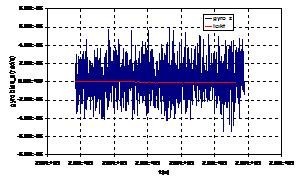



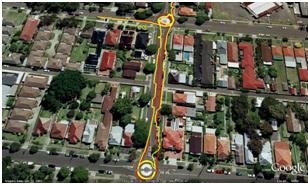
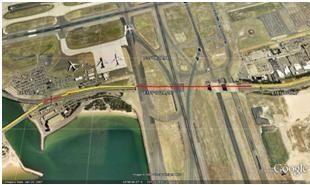

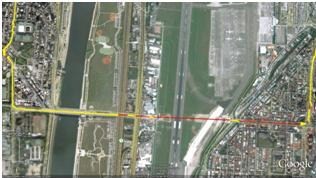












 (3 votes, average: 1.67 out of 5)
(3 votes, average: 1.67 out of 5)




Leave your response!